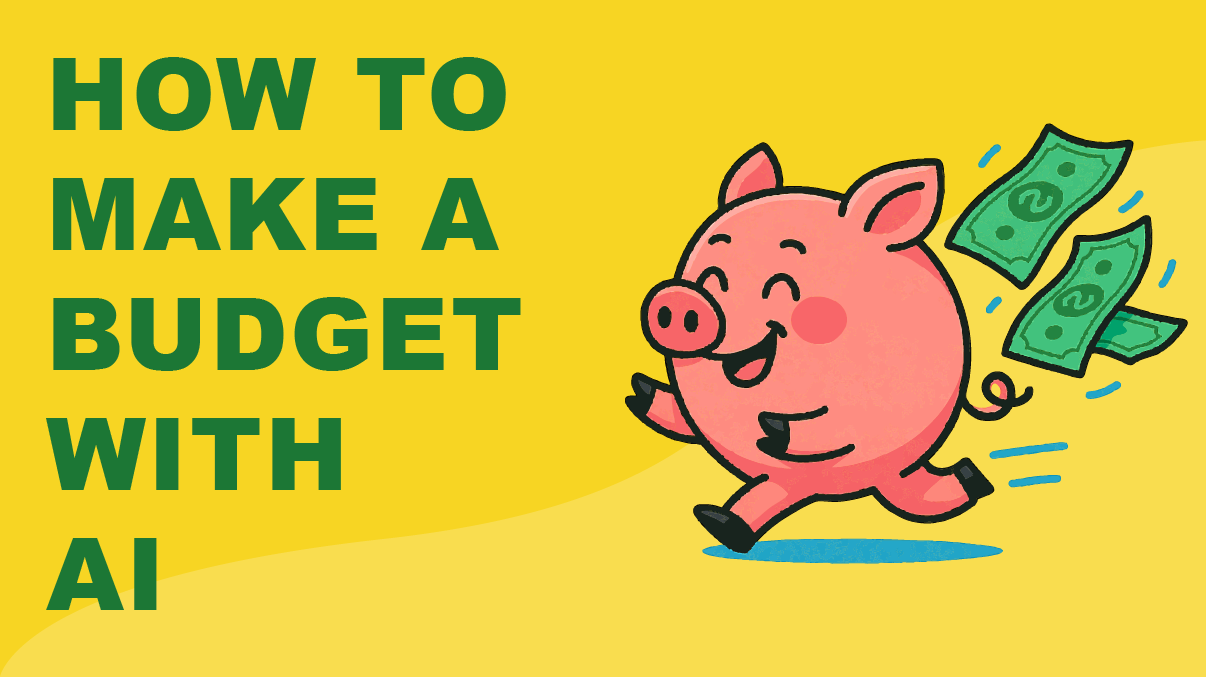Why Knowing the Basics Still Matters
A few years ago, I had a car break down in the middle of nowhere. It was late, there was no cell service, and a tow truck was hours away even if I could have called one.
Luckily, I knew enough about my car to pop the hood, check a few things, and get it running well enough to limp to the next town. If I had not understood the basics, I would have been stuck waiting, hoping someone else could fix the problem.
Managing your money is the same way. AI can help you create a budget, track spending, and even make recommendations. But if you do not understand the principles behind those numbers, you will not know how to fix your financial plan when something goes wrong.
The Role of AI in Budgeting
AI budgeting tools can be incredibly helpful. They can:
-
- Automatically track spending across your accounts
-
- Categorize expenses in real time
-
- Predict upcoming bills and cash flow
-
- Suggest spending adjustments based on your goals
This is powerful, especially if you have struggled to stay consistent with a budget in the past. AI takes much of the manual work out of budgeting, which means you can focus on following the plan instead of building it from scratch.
The Danger of Relying Only on AI
Here is the problem; if you let AI do all the thinking for you, you risk losing the understanding of why your budget is set up the way it is.
If your expenses change, your income drops, or you hit an unexpected bill, you might not know which part of the plan to adjust. AI can crunch the numbers, but you need to be able to interpret them and make judgment calls based on your personal priorities.
The Core Budgeting Principles to Understand First
Before you turn everything over to an AI tool, get familiar with these basics:
1. Income vs. Expenses
Know exactly how much money you have coming in and going out each month. AI can track this, but you should be able to list your top expenses without looking.
2. Fixed vs. Variable Costs
Fixed costs (like rent, utilities, and insurance) are predictable. Variable costs (like dining out or entertainment) change from month to month. Knowing the difference helps you identify where to cut back quickly.
3. Savings as a Non-Negotiable
Treat savings like a bill you have to pay. Whether it is 10 percent or more, set an amount that is automatically transferred before you start spending.
4. Debt Repayment Priorities
If you have high-interest debt, you need a plan for paying it down faster. AI can schedule payments, but only you can decide if extra cash should go toward debt or investments.
5. Emergency Fund
Before you aim for complex investing strategies, make sure you have 3 to 6 months of expenses set aside in a safe, accessible account.
How to Make a Budget Using AI
Once you understand the basics, you can use any AI tool to help create your budget, no account syncing required.
Here’s how:
Gather Your Financial Information
Write down your monthly income, fixed expenses, variable expenses, debt balances, and savings goals. AI works best when you feed it accurate, detailed information.
Prompt the AI With Your Data
Paste your numbers into an AI tool and ask:
“Using the information below, create a monthly budget that prioritizes savings, covers all fixed expenses, and allocates the rest to variable spending. Include suggestions for cutting costs if I overspend.”
Ask for Multiple Scenarios
Request different versions, such as a “strict savings” plan, a “balanced” plan, and a “debt-first” plan. This lets you see trade-offs before making a decision.
Customize the Results
Review the AI’s suggestions and adjust them to fit your priorities. For example, you might want to increase travel spending while lowering dining out, or put extra toward an emergency fund.
Review Monthly and Refine Prompts
Each month, update the AI with your actual spending and ask for an adjusted plan. Over time, you will learn how to write more specific prompts that give you exactly the kind of budget you want.
Why Continuing to Learn Matters Even With AI
AI can help you budget, but it cannot replace your personal judgment, discipline, and financial vision.
If you follow this newsletter, you will gain insight to building the skills to understand money, make smart decisions, and adapt to changes in your life.
When you know the “why” behind your budget, AI becomes a tool you control, not a system that controls you. That is what will keep you moving toward your goals no matter what life throws at you.
Takeaway
AI can make budgeting faster and easier, but it is only as good as the person using it. Learn the basics first, use AI to automate the repetitive parts, and keep reviewing your plan so you are always in control.
If you can fix a car in the middle of nowhere because you understand how it works, you can fix your budget when life does not go according to plan.
FAQ
How to Make a Budget Using AI
Q: Can AI really help me save money?
A: Yes, by tracking spending automatically and highlighting areas to cut back.
Q: Do I need to know budgeting basics before using AI?
A: Absolutely. Understanding the basics ensures you can make changes confidently if something shifts.
Q: Which AI budgeting tool is best?
A: It depends on your needs. Try a few free trials to see which interface and features fit your style.

